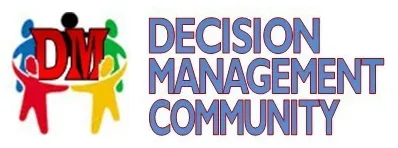Three Levels of Knowledge
Blog: Decision Management Community
This article by Gadi Singer introduces “Three Levels of Knowledge — 3LK — namely instantaneous, standby, and retrieved external knowledge, due to factors of scale, cost, diversity of tasks, and continuous adaptation. Thrill-K will be introduced as the AI systems architecture blueprint that implements 3LK principles for next-generation AI.” Link
Humans and intelligent machines must access all three levels of knowledge — instantaneous, standby and retrieved external knowledge — to balance scale and cost with the ability to complete a diverse range of tasks and to adapt continuously. To demonstrate, I will map some examples to the three levels of knowledge. Let’s apply them to two situations: a doctor prescribing two medications to a patient and a driver driving his car through a neighborhood.
· Instantaneous knowledge: A patient asks their doctor about administering a medication for a heart condition and a common pain-relief medicine. She approves it immediately ‘without needing to think’ because these two medications are co-administered routinely and safely. The response is immediate and automatic.
Similarly, when presenting his System 1 / System 2 model (based on Daniel Kahneman’s book “Thinking Fast and Slow”), Yoshua Bengio gave the example of a driver navigating his way on a very familiar route and without the need for much attention. The knowledge of the road, the route and the driving dynamics are all instantaneous. Bengio described this mode as being intuitive, fast, unconscious and habitual.
· Standby knowledge: A patient asks their doctor about administering a medication for a heart condition and a less commonly used lung infection medication. While the doctor never prescribed those two medications together before, she understands their underlying mechanisms and potential interactions. She needs to utilize her broader knowledge base and use reasoning to reach a conclusion about whether they can be administered together.
In the driver example, Bengio had him drive through an unfamiliar area with challenging road conditions. The driver now needs to consider all the visual input and apply his attention to navigating the situation safely. He called this System 2 thinking and characterized it as being slow, logical, sequential, conscious, linguistic, and algorithmic, with planning and reasoning.
· Retrieved external knowledge: A patient asks their doctor about administering a medication for a heart condition together with a new COVID-19 treatment that was just approved last month and has very recent studies that the doctor has not explore yet. The doctor might consult external knowledge as well as apply existing knowledge and skills to obtain pertinent additional information and guidance.
As for the driving example, the driver might have reached a block in the road. The driver might pull out his/her phone to look at the area map or get GPS directions to know how to proceed. This situation can only be resolved with the retrieval of additional external knowledge. Applying the 3LK terminology, we will say that they used the third level of retrieved external knowledge.

